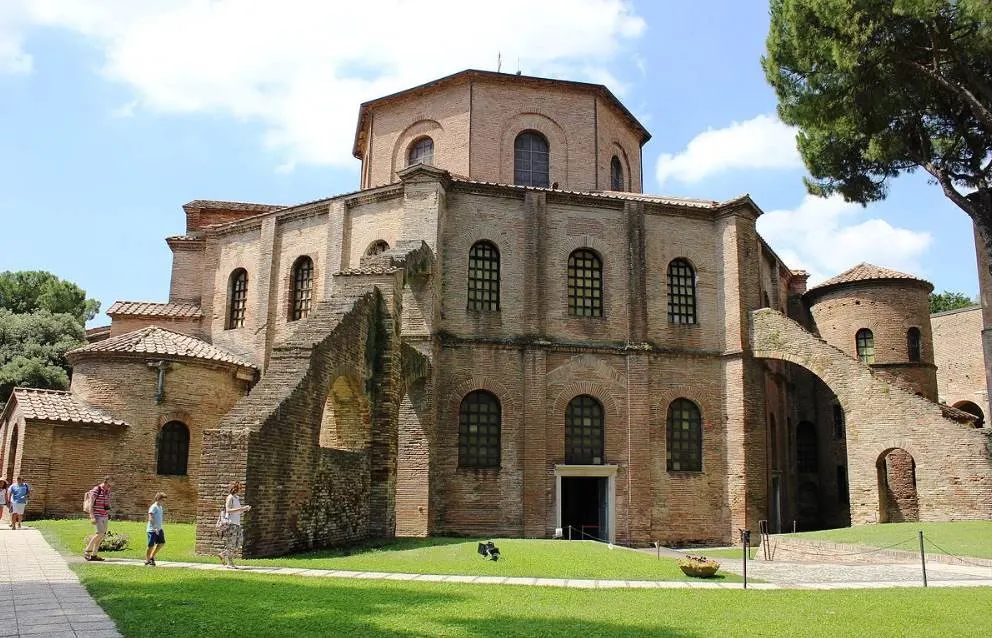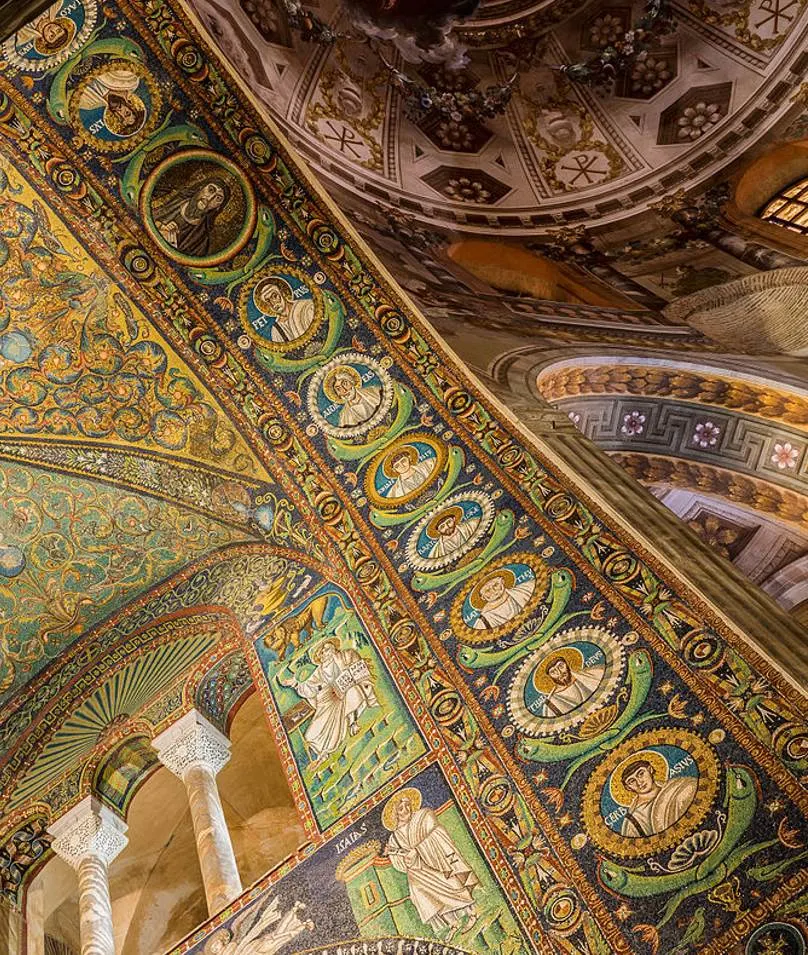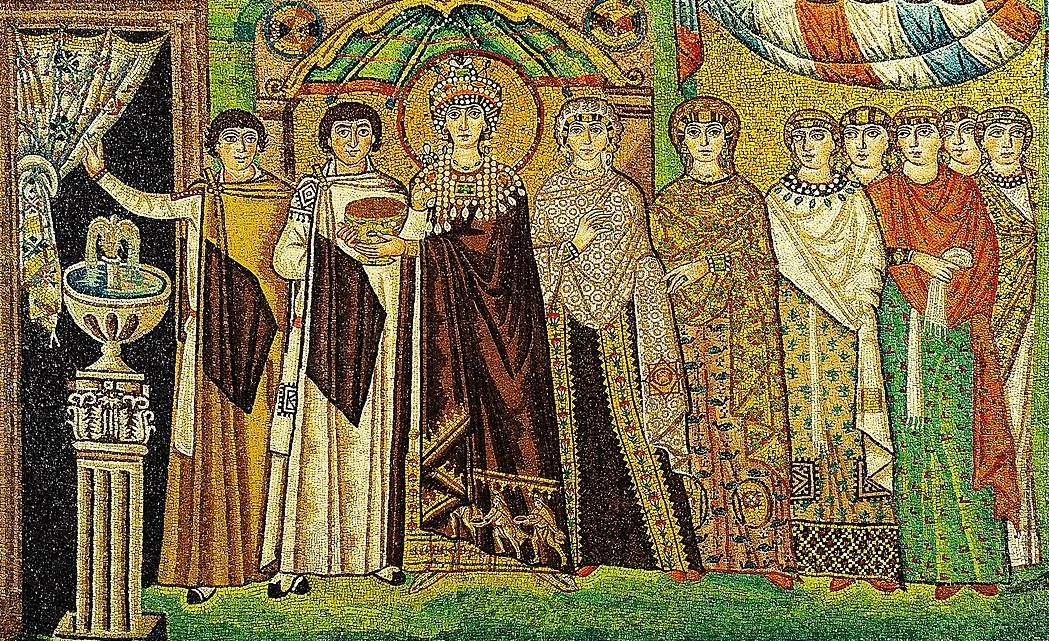The Fall of the Western Roman Empire in 476 A.D. plunged just about all of Western Europe into the Dark Ages. Very few structures and art survive from this period.
The Eastern Roman Empire, however, continued to thrive until 1453. The Byzantine Empire, as it’s also referred to, even encompassed modern-day Italy and parts of southern Spain.
One of the most important cities in Italy at the end of the Western Roman Empire is home to an amazing Byzantine building. It features remarkably well-preserved Byzantine art as well.
In this article, you’ll discover some of the most interesting facts about the Basilica of San Vitale, one of the ultimate architectural treasures in Italy (and that means something).
1. The church is located in the heart of the capital city of the Province of Ravenna
Ravenna is the capital city of the province with the same name and is a port city on the East Coast of Italy. This rather small province is part of the Emilia-Romagna region of Northern Italy.
Although it’s far from the largest city in Italy with a population of nearly 160,000 inhabitants, Ravenna has an extensive history.
It was the capital of the Western Roman Empire between 408 and its fall in 476 and retained its importance in the following centuries.
The city became the capital of the Ostrogothic Kingdom, run by Germanic people until it was unconquered by the Byzantine Empire in 540.
It subsequently became the capital city of the Exarchate of Ravenna, a lordship within the Eastern Roman Empire between 584 and 751. The Lombards briefly ruled here before Ravenna became under the control of the Popes.

The Basilica of San Vitale is one of the most fascinating churches in Ravenna and is located right in the heart of the city.

2. It was completed in the 6th century and cost quite a bit of money to build
The church was constructed between the years 526 and 547. This means that it was started when the Ostrogoths ruled in the city and completed shortly after Eastern Roman Emperor Justinian I conquered it.
Yes, this magnificent building pre-dates the establishment of the Exarchate of Ravenna, quite amazing!
We know that the name of the main patron of the church was Julius Argentarius and that he spent about 26,000 solidi (gold coins) on it. That’s the equivalent of 16.37 kilos (36.11 lbs) of gold!
Apart from the fact that he might be included in one of the amazing mosaics inside the church, little is known about the man and his motivation to build the structure.

3. The building features both Roman and Byzantine architectural elements
The name Basilica refers to a church building today, but in Roman times, these were multi-functional structures that were used for a variety of events.
An inscription found inside the building declares it to be a basilica, but the fact that it features an octagonal design makes this unlikely.
The building combines both Roman and Byzantine architectural elements. The dome and arches are typically Roman elements while the polygonal apse and flying buttresses can be found in Byzantine buildings.
It remains one fon the best-preserved buildings in the world that was completed during the reign of Justinian I in the 6th century.

4. The church was dedicated to a martyr but it remains unclear which one
The church was dedicated to a martyr named Vitalis, but there were two Christian martyrs named as such.
The first is Saint Vitalis of Milan, a martyr who is also the patron saint of Ravenna. The second is Saint Vitale, a martyr who died during the persecution of Emperor Diocletian in the early 4th century.
Because Saint Vitalis of Milan is the patron saint of Ravenna, the church was likely named after him.

5. The interior triumphal arch is magnificently decorated with mosaics
The Basilica of San Vitale in Ravenna is renowned for featuring some of the most amazing Byzantine mosaics outside of Istanbul.
Many parts of the interior are covered with colorful mosaic art which is a perfect example of the type of art that was produced during this period in history, especially in the Byzantine Empire.
The triumphal arch inside the basilica depicts Jesus Christ, the Twelve Apostles, Saint Gervasius, and Saint Protasius.
The two saints were the sons of Saint Vitalis of Milan, a notion that strengthens the theory that the basilica was dedicated to their father.

6. The most famous artworks inside are the Justinian and Theodora panels
Many mosaics are related to the Old and New Testaments. Two famous mosaics are dedicated to the Roman Emperor and his wife Theodora.
These incredible artworks were completed in the year 547 and are located at the bottom of the side walls of the apse of the basilica.
Emperor Justinian (as seen in the image featuring the doner) and his wife Theodora have a halo around their heads. This is similar to the halo that can be seen around Christ’s head in the dome of the apse.

7. The frescoes inside the dome date back to the Baroque era
When you enter the basilica, you’ll be amazed by the amazing artwork that decorate its interior. Many artworks date back to the 6th century, but one amazing fresco was produced much later.
The fresco inside the dome was created between 1778 and 1782 by a team of Italian artists. Although they are classified as Baroque paintings, they feature the distinctive flamboyance of Rococo artworks.
The trompe-l’oeil effect of these splendid frescoes gives the interior of the church yet another feature to be stunned about.

8. It’s one of the 8 buildings in Ravenna that became UNESCO World Heritage sites
Ravenna was the most important city in Italy between the 5th and 8th centuries. This resulted in several amazing buildings being constructed here during this period.
Many of these Byzantine structures still stand here and 8 of these have been included in a World Heritage Site in 1996 known as the “Early Christian Monuments of Ravenna.”
These monuments are the:
- Mausoleum of Galla Placidia,
- Neonian Baptistery
- Basilica of Sant’Apollinare Nuovo
- Arian Baptistery
- Archiepiscopal Chapel
- Mausoleum of Theodoric
- Church of San Vitale
- Basilica of Sant’Apollinare in Classe
If you want to admire Byzantine architecture and art, there’s hardly a better place to do so in Europe (outside of Istanbul) than this city in Eastern Italy.

